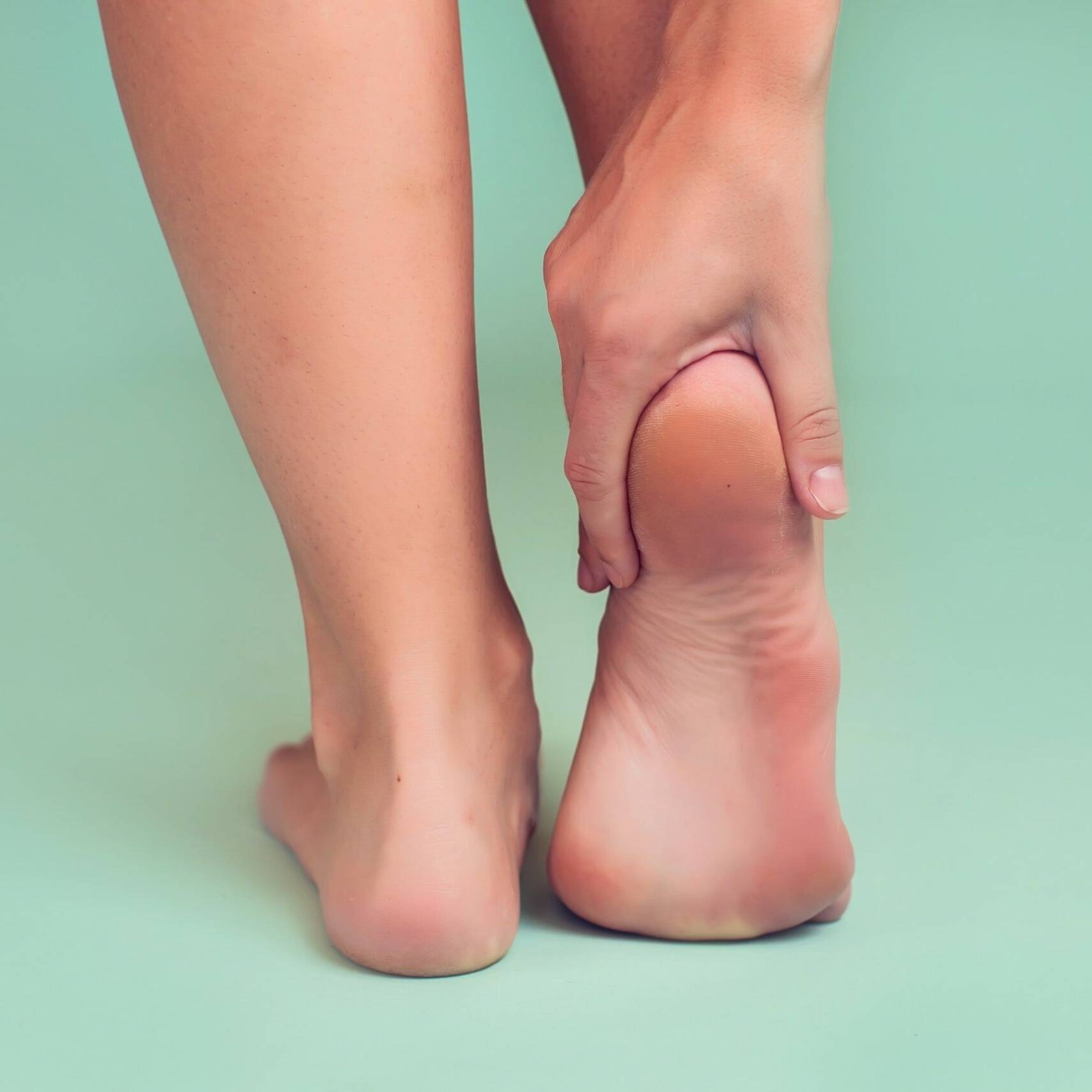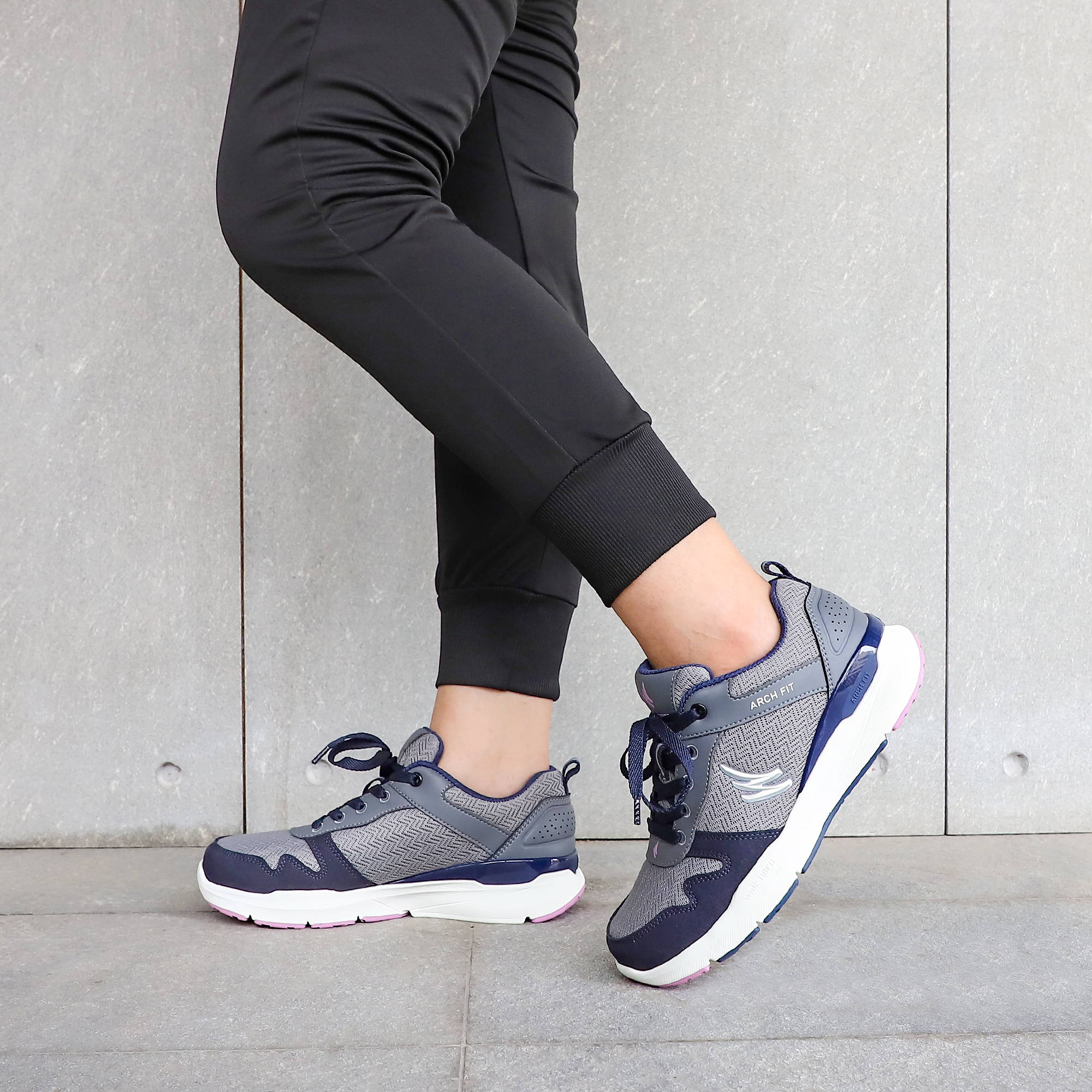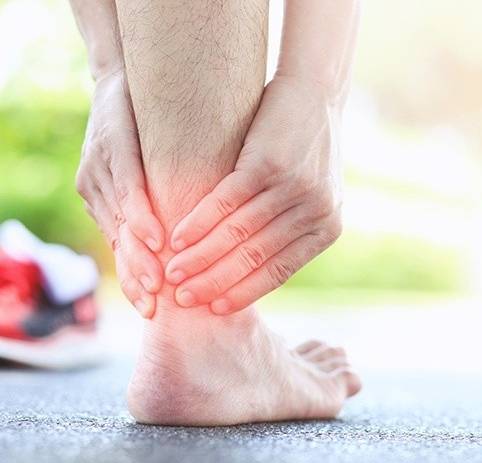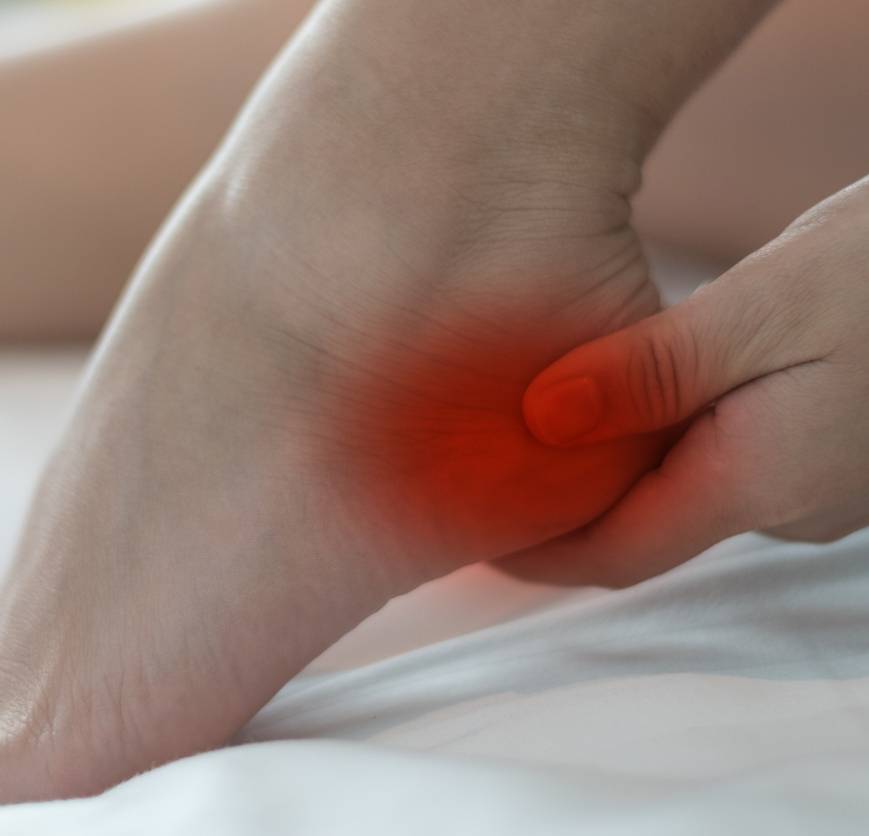What Is Heel Spurs?
A heel spur is a foot condition that’s created by a bony-like growth, called a calcium deposit, that extends between your heel bone and arch.
Heel spurs often start in the front of and underneath your heel. They eventually affect other parts of your foot. They can get up to half an inch in length. They may not necessarily be visible to the naked eye.
Detecting heel spurs can be challenging. Heel spurs don’t always cause pain, and not all heel pain is related to spurs. Can be present with other conditions such as plantar fasciitis, and Achilles Tendinitis.

What Causes Heel Spurs?
Heel spurs are directly caused by long-term muscle and ligament strain. Eventually, this excessive strain stresses the heel bone (calcaneus) causing spurs. Heel spurs develop over time. They don’t suddenly appear after a workout or a sports event. Heel spurs tend to occur when you ignore early symptoms like heel pain. Repetitive stress from walking, running, or jumping on hard surfaces is a common cause of heel spurs. They may also develop from wearing shoes that don’t support your foot.
Heel spurs may also be caused by:
- Wearing shoes without support too often
- Walking gait issues
- Excess body weight
- Bruising of the heel
Many people who have heel spurs also have plantar fasciitis. This painful condition deals with the tough, fibrous tissue that runs between your heel and toes. Having plantar fasciitis increases your risk of eventually developing heel spurs.
How To Relieve Heel Spurs?
Heel spur treatment primarily consists of rest and lifestyle changes. Here are steps you can take to help relieve Heel Spurs:
- Orthotic shoes, such as WALKHERO, can help give you the arch and heel support needed to reduce pain. Heel pads can also prevent further wear and tear for all-around foot protection.
- Rest is one of the treatment measures for both plantar fasciitis and heel spurs. Not only does rest help alleviate acute pain, but getting off your feet can also prevent your condition from worsening. It’s especially important to rest the feet after long periods of standing and other activities.
- Stretching exercises. Heel spur exercises consist of stretching the heel and plantar fascia muscles. Your physical therapist can show you how to do some exercises at home. These can be performed at any time of the day, but stretches can be especially helpful at night before bedtime.
- Cold compresses. Using ice packs or cold compresses for up to 15 minutes at a time may help relieve heel spur pain by temporarily numbing the area. This method also helps reduce swelling. Cold compresses are preferable over heat packs for heel spurs because heat works better for joint and muscle aches.

Recommended Shoes For
Heel Spurs
Finding the best shoes for heel spurs can make more of a difference than you may think. Each shoe we make features our innovative Foot-Care™ technology. Made with a foam insole and high cushioning, WALKHERO's line of shoes offers heel support that allows you to go the distance. The soles have a gender-friendly cushioning design, which supports the natural biomechanics of your feet, and the deep heel cup can also lessen the impact by stopping your heel from making contact with the ground. There are plenty of shoe options for men and women suffering from heel spurs at WALKHERO, from the best work shoes and walking shoes to cute summer sandals, and everything else in between.




